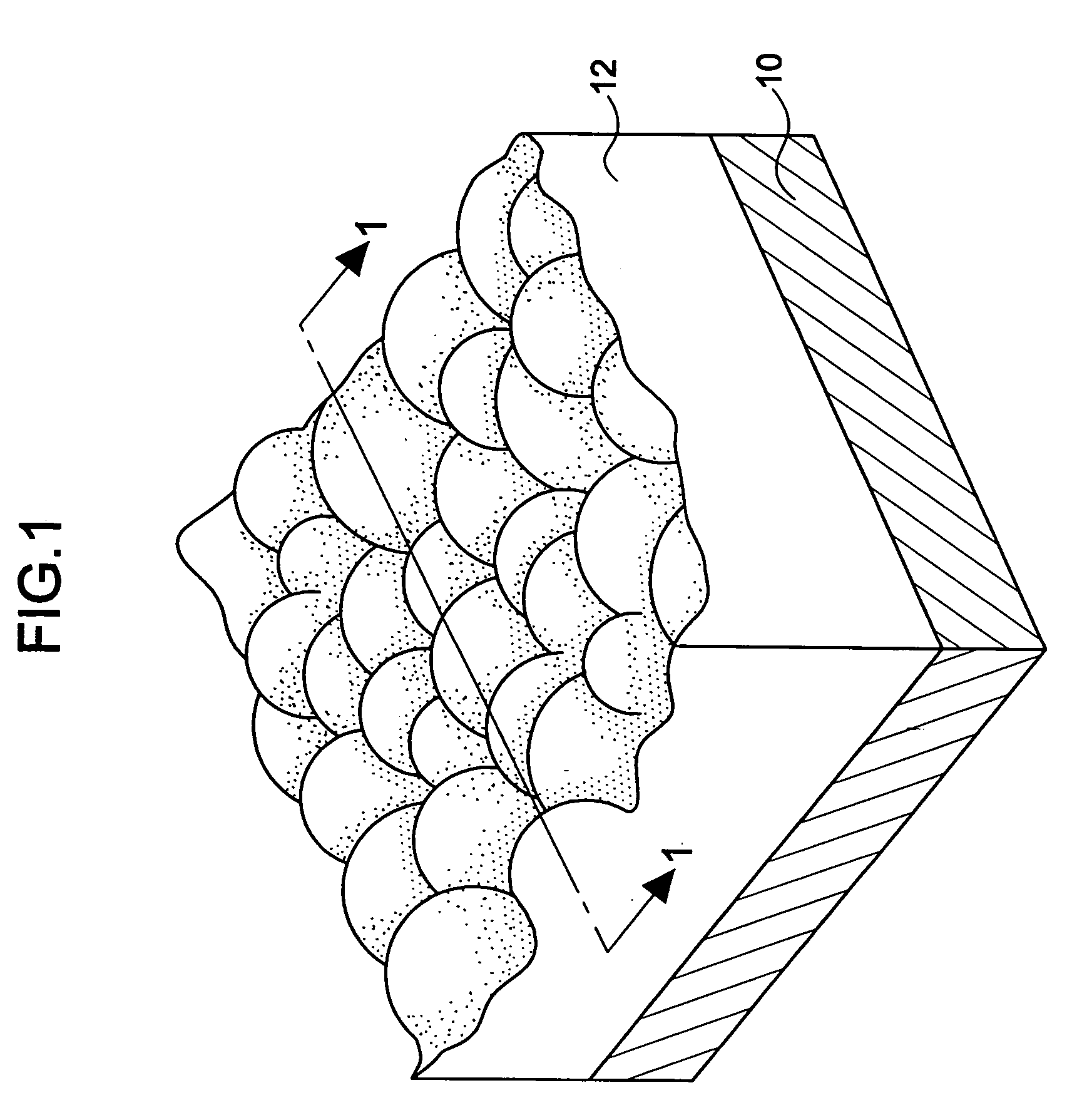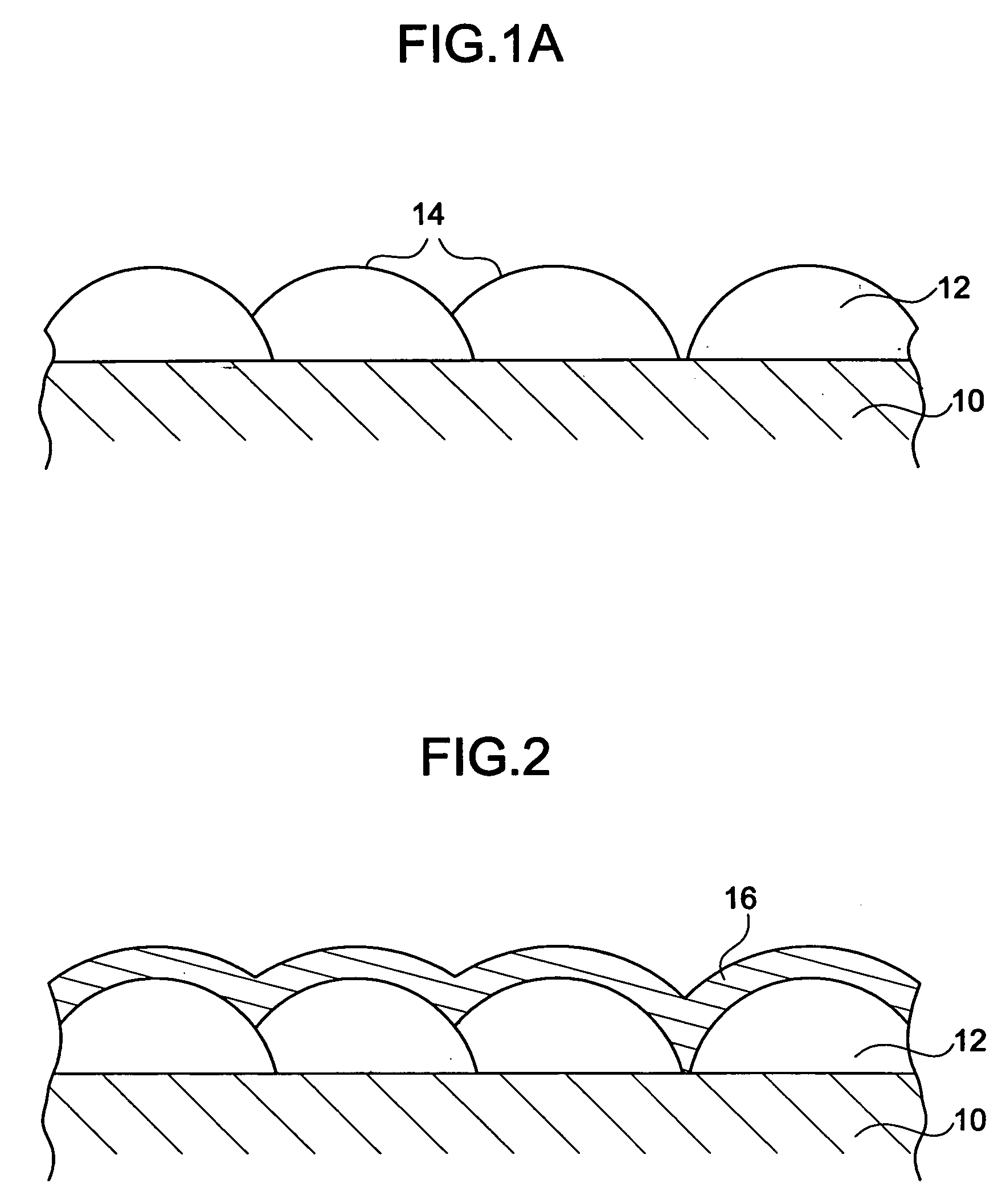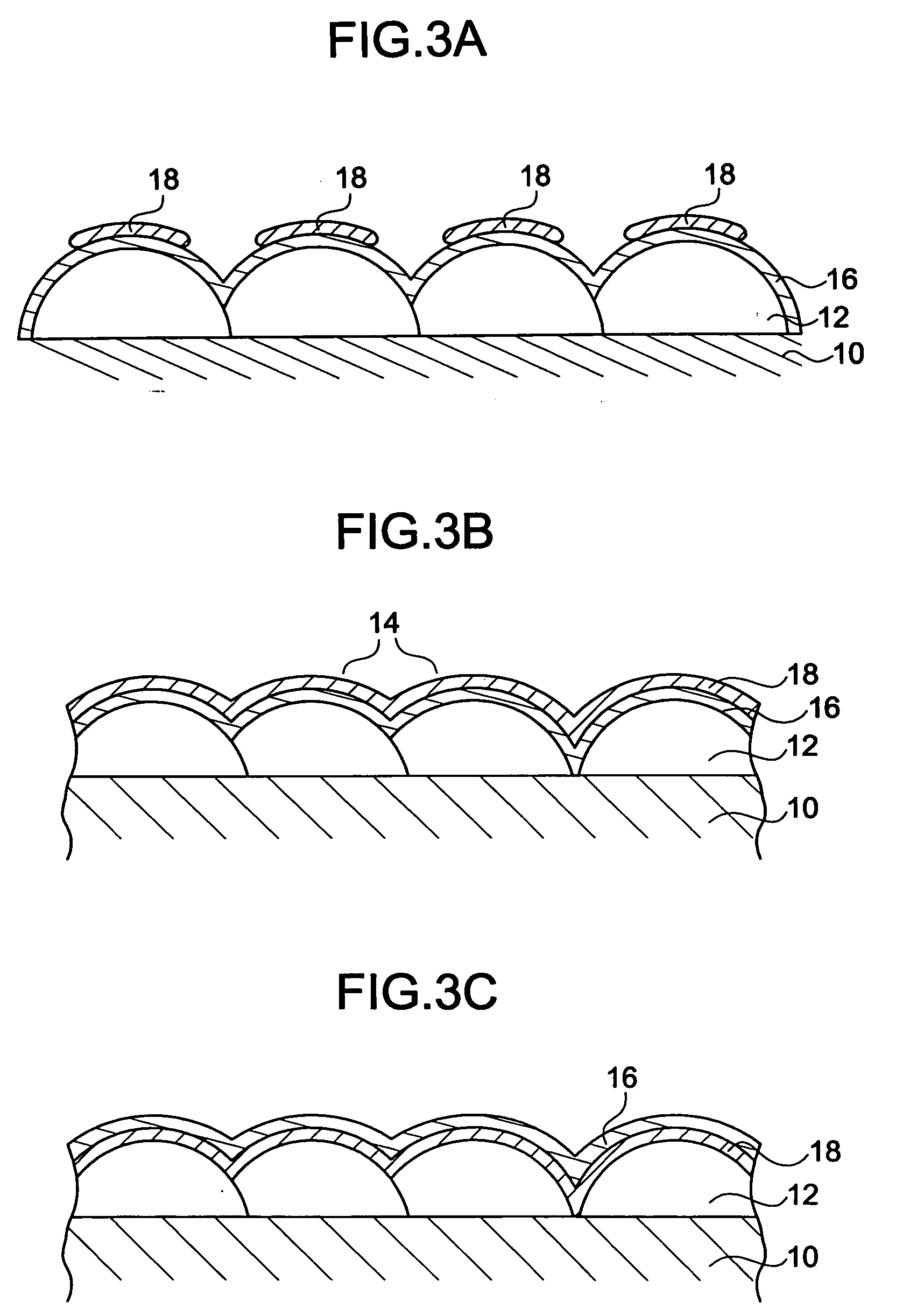Nanometer engineering of metal-support catalysts
a technology of metal-support catalysts and nanometers, which is applied in the field of catalysts, can solve the problems of difficult to provide reaction vehicles and inexact science of catalysis
- Summary
- Abstract
- Description
- Claims
- Application Information
AI Technical Summary
Benefits of technology
Problems solved by technology
Method used
Image
Examples
Embodiment Construction
[0024] The invention is directed to a method of forming a catalyst body, and also to the catalyst body produced in accordance therewith.
[0025] Referring now to the drawings, in which like numerals indicate like components throughout the various embodiments, FIG. 1 is an exposed three-dimensional view of a hemispherical grain (HSG) polysilicon layer 12 which has been formed on a generic substrate 10. The substrate 10 can be comprised of silicon, silicon-on-insulator, other semiconductor materials, or insulator material, and can also be any type of industrial base or foundation structure. FIG. 1A is an exposed side view of the embodiment shown in FIG. 1. The HSG polysilicon layer 12 is characterized by its textured, bumpy surface as illustrated in the drawings. To form the HSG polysilicon layer 12 shown in the figures, amorphous silicon is first deposited on substrate 10 using one or more available techniques such as chemical vapor deposition (CVD), low pressure chemical vapor deposi...
PUM
| Property | Measurement | Unit |
|---|---|---|
| thickness | aaaaa | aaaaa |
| thickness | aaaaa | aaaaa |
| thickness | aaaaa | aaaaa |
Abstract
Description
Claims
Application Information
 Login to View More
Login to View More - R&D
- Intellectual Property
- Life Sciences
- Materials
- Tech Scout
- Unparalleled Data Quality
- Higher Quality Content
- 60% Fewer Hallucinations
Browse by: Latest US Patents, China's latest patents, Technical Efficacy Thesaurus, Application Domain, Technology Topic, Popular Technical Reports.
© 2025 PatSnap. All rights reserved.Legal|Privacy policy|Modern Slavery Act Transparency Statement|Sitemap|About US| Contact US: help@patsnap.com



